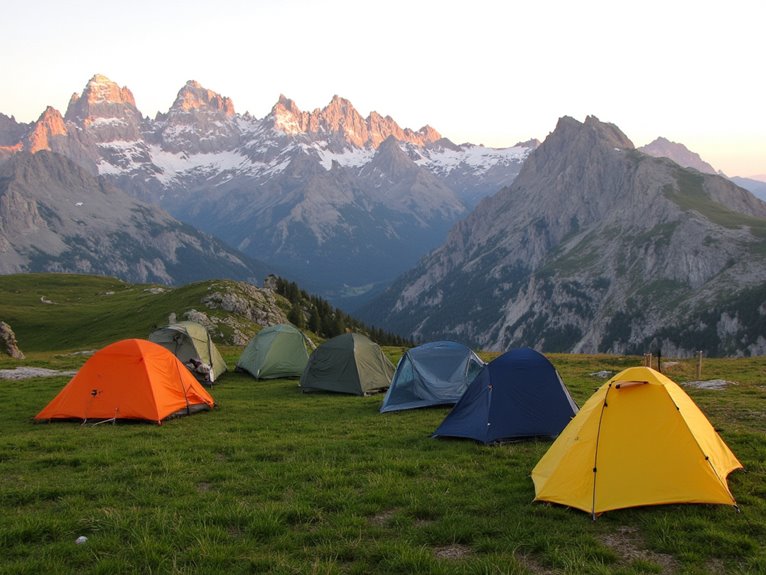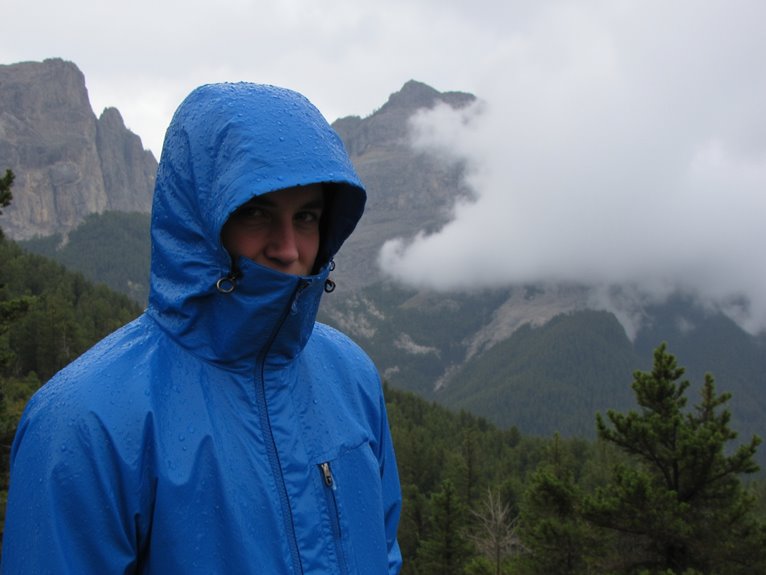What Can I Put Under My Swag to Stop the Cold?
To prevent cold ground temperatures from seeping into your swag, consider using insulating mats, reflective emergency blankets, foam pads, or DIY newspaper insulation. Air pads and thermal underlays also provide additional layers of comfort and insulation. Insulating mats trap warm air close to the body, while reflective emergency blankets retain up to 90% of radiant body heat. Foam pads and air pads offer extra comfort and cushioning, while DIY newspaper insulation is a cost-effective and eco-friendly option. Thermal underlays protect your swag from moisture and abrasion. Investigate each of these options to find the best solution for a warm and comfortable night's sleep.
We are supported by our audience. When you purchase through links on our site, we may earn an affiliate commission, at no extra cost for you. Learn more. Last update on 6th January 2026 / Images from Amazon Product Advertising API.
Insulating Mats for Cold Nights
Three-season campers can attest that a good night's sleep is largely dependent on a warm and comfortable sleeping setup, with insulating mats playing a crucial role in retaining body heat on cold nights. Insulating mats are designed to reduce heat loss by trapping warm air close to the body, preventing cold ground temperatures from seeping into the sleeping space. Look for mats with high R-values, which measure thermal resistance, to facilitate maximum insulation. Additionally, consider the material and thickness of the mat, as well as its compactness and weight for easy transport. By choosing the right insulating mat, campers can enjoy a restful night's sleep even in chilly conditions.
Reflective Emergency Blankets Work
In emergency situations, reflective emergency blankets serve as a reliable safeguard against hypothermia, utilizing their metallized coating to retain up to 90% of radiant body heat. These blankets are designed to be lightweight, compact, and waterproof, making them an ideal addition to any outdoor enthusiast's kit. When placed under a swag, they can substantially reduce heat loss, keeping you warm and comfortable throughout the night. The metallized coating works by reflecting radiant heat back to the body, rather than allowing it to escape. This technology allows for efficient heat retention, making reflective emergency blankets an essential item for anyone venturing into cold climates.
Foam Pads for Extra Comfort
Incorporating foam pads into your outdoor gear can greatly improve the comfort level of your rest periods, providing a crucial layer of cushioning and support that helps alleviate the physical demands of exploring rugged terrain. These pads can be placed under your swag to create a comfortable barrier between you and the cold, hard ground. Look for foam pads specifically designed for outdoor use, as they are typically made with durable, water-resistant materials that can withstand the elements. When choosing a foam pad, consider the thickness and density of the material, as well as its compact size and weight. A good foam pad can make all the difference in getting a good night's sleep, even in the most remote and unforgiving environments.
DIY Insulation With Newspaper
In the realm of DIY insulation, using newspaper can be a surprisingly effective and eco-friendly solution. By shredding and packing newspaper into gaps and crevices, homeowners can create a barrier that helps to block cold air and reduce heat loss. This simple yet innovative approach offers several benefits, including improved energy efficiency and reduced energy costs.
Newspaper Insulation Benefits
One of the most cost-effective and eco-friendly DIY insulation methods is using shredded newspaper, which can provide an R-value of up to R-3.5 per inch of thickness. This makes it an attractive option for those on a budget or seeking a sustainable solution. Newspaper insulation is also a great way to repurpose recyclable materials, reducing waste and promoting environmental sustainability. Additionally, newspaper is a natural, non-toxic, and fire-resistant material, making it a safe choice for indoor use. By shredding and layering newspaper, you can create a thick, insulating barrier that effectively retains warmth and blocks cold air. This DIY insulation method is easy to implement and requires minimal equipment, making it an accessible solution for anyone looking to stay warm and cozy.
Effective Cold Blocking
By strategically layering shredded newspaper in your walls, floors, or ceilings, you can create an effective cold-blocking barrier that minimizes heat loss and keeps your living space warm and cozy. This DIY insulation method is not only eco-friendly but also cost-effective. To achieve ideal results, start by shredding the newspaper into thin strips. Next, fill the desired area with the shredded paper, ensuring it's densely packed to prevent cold air from seeping through. For added protection, consider layering the newspaper with other natural insulators like straw or sawdust. By following these simple steps, you'll be able to enjoy a warmer and more energy-efficient living space without breaking the bank.
Air Pads for Cold Ground
Air pads, designed to provide an extra layer of insulation and comfort, are a popular choice for campers who plan to set up camp on cold ground. These inflatable pads are typically made of durable materials, such as nylon or polyester, and are filled with air to provide a cushioning effect. This not only adds comfort but also helps to reduce heat loss by separating the camper from the cold ground. When choosing an air pad, consider the R-value, which measures insulation efficiency. Look for pads with high R-values for colder climates. Additionally, consider the thickness and material of the pad, as well as its weight and packed size, to verify it meets your camping needs.
Thermal Underlays for Swags
Thermal underlays, designed specifically for swags, offer an additional layer of insulation, trapping warm air and preventing heat loss, while also protecting the swag from moisture and abrasion. These underlays are typically made of synthetic materials, such as polyester or nylon, which provide excellent thermal insulation properties. They can be easily slipped under the swag, providing an extra layer of warmth and comfort. Thermal underlays are also breathable, allowing moisture to escape, reducing the risk of condensation buildup. They are lightweight, compact, and easy to clean, making them an ideal solution for outdoor enthusiasts. By incorporating a thermal underlay into your swag setup, you can enjoy a warmer and more comfortable sleeping experience, even in cold conditions.




